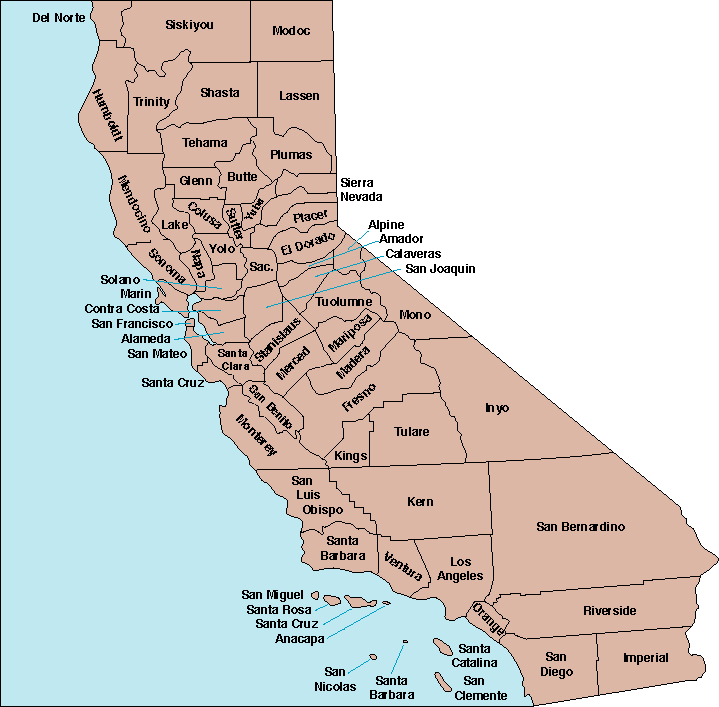CA Counties Count – Smallest to Largest, Plus Fun Facts
CA Counties Count – Smallest to Largest, Plus Fun Facts
Blog Article

Curious to know how many counties California actually has? You’re certainly not the only one. From trivia nights to travel planning, the number 58 keeps popping up, but that single digitis just the first layer of a deeper tale.
The Golden State’s 58 counties createa tapestry of extremes: sun-drenched coastal hubs, snow-capped alpine districts, fertile Central Valley breadbaskets, and global entertainment capitals. Every county has a chapter in the state’s saga, shaped byrailroad expansion, cutting-edge innovation, and ever-changing demographics.
In the sections ahead, we’ll dig intohow the state’s county map froze at fifty-eight, the real responsibilities counties shoulder, and which ones stand out for size, population, or sheer quirkiness. By the end, you’ll own the knowledge—and sound like a local expert with confidence.
Origins of California’s 58 Counties
When California joined the Union in 1850, the map was a patchwork of just 27 jurisdictions. A tidal wave of forty-niners and immigrants compelled legislators to carve out new counties. Before the century turned, the count had expanded toward 53 counties, and in 1907 the last adjustments were ratified, setting in stone the canonical figure of 58.
Assembly journals reveal that most new counties stemmed from a trio of factors:
- Geographic isolation left settlers days from the nearest courthouse.
- Tax disputes splitting river towns from hinterlands ignited partition drives.
- Language and immigrant communities sought their own seats.
In less than seventy years, the political map hardened. Today, even bold secession schemes rarely get ballot traction, leaving historians to label the era when new counties sprouted decisively over.
Landscape and Climate Diversity Across California Counties
Imagine a line from the Smith River watershed to the date groves of Coachella, and you’ll cross dozens of ecosystems. Pacific-facing districts enjoy fog-cooled summers, while great agricultural belts bank on irrigation.
- Mountain counties such as Mono, Mariposa, and Calaveras store California’s snowpack.
- River-delta territories balance peat islands and orchards.
- Channel-coast administrators like Los Angeles license film crews on beaches.
Such variety explains the stark fiscal gaps between counties. Topography dictates everything from wage levels to weekend hobbies.
What Counties Actually Do
Within the state’s tiered system, municipalities handle zoning, but counties shoulder the bread-and-butter functions that keep daily life humming. Life’s paperwork trail—marriage licenses, tax rolls, voter registries—all are archived at the recorder-assessor’s office.
County law-enforcement offices patrol unincorporated land, while superior courts hear felony cases. Public-health branches coordinate Medi-Cal. Funding debates fill chamber galleries with activists.
Example: Contra Costa’s Shared Services Model
Contra Costa partners with nearby cities for animal control, illustrating how flexible the system is. One template doesn’t fit all when land areas shift from 47 to 20 000 sq mi.
Ultimately, these 58 mini-capitols act as middle managers between Capitol and curbside. Knowing their role empowers voters.
Population, Economy, and Record-Holding Counties
The state shelters over 39 million residents, but that population is far from evenly spread. LA’s single jurisdiction accounts for roughly a quarter. On the flip side, tiny Alpine County rarely tops 1 200 inhabitants.
- Top headcount: Los Angeles
- Least populous: Alpine County
- Largest area: San Bernardino
- Smallest area: San Francisco
Fiscal bandwidth mirrors population spread. South Bay enclaves report six-figure median incomes, while cotton-and-almond hubs depend on seasonal labour influxes. Such economic polarity fuels housing affordability crises every decade.
Knowing which county tops which listis trivia gold: county borders redraw home-buying budgets and business licences.
Touching All Counties in One Journey
Adventure-hungry drivers, visiting every single county has become a badge. The classic route kicks off in San Diego, rolls up the Pacific Coast Highway, swings through Monterey, then zigzags across rice-field flats and orchard grids, before ascending into the granite spine for historic gold-rush hamlets.
Breaking the Trip Into Segments
- Southern Swing – Border to wine country; ten jurisdictions in four days.
- Heartland Stretch – Grapes to rice paddies; flat-land express.
- Northern Peaks – mountain lakes and volcano cones; jaw-dropping vistas.
Cap off the circuit in the desert southeast, after two thousand kilometres of asphalt. By then, you can answer any road-trip quiz about county tallies—because your copyright stamps prove it!
FAQ
Below you’ll find concise answers to the most more info common county-related queries.
What is the total number of counties in CA?
State records confirm 58 counties—a number that hasn’t changed since 1907. Check any authoritative source, and you’ll find the same figure: 58 in all.
Where do the most Californians live?
The population heavyweight is Los Angeles County, home to over 10 million residents. Decades of immigration, entertainment dominance, and job growth keep the numbers high.
Least populous California county?
Alpine County holds that distinction, often cited at just about a thousand souls. High-elevation geography naturally restricts settlement, preserving a frontier feel.
Which county covers the largest land area in California?
The land-area giant is San Bernardino County encompassing deserts, mountains, and metro suburbs alike. You can drive for hours without leaving its borders—crossing ski slopes, dunes, and bedroom communities.
What historical events fixed the number at 58?
Early statehood growth pressures split larger districts into smaller units, ending when Imperial County formed in 1907. Every modern effort to create a new county stalls in committee or dies at the ballot box.
Can new counties still be created in California?
On paper, state statutes permit county formation, yet practical barriers loom large. Petition drives, feasibility studies, dual-county referenda, and a two-thirds vote in Sacramento make secession rare. That’s why no county lines have moved since the early 1900s.
What services do California counties provide to residents?
Counties handle the backbone of local governance: property assessments, public hospitals, welfare programs, and jails. Remove counties from the equation, and civil society would struggle to operate.
Report this page